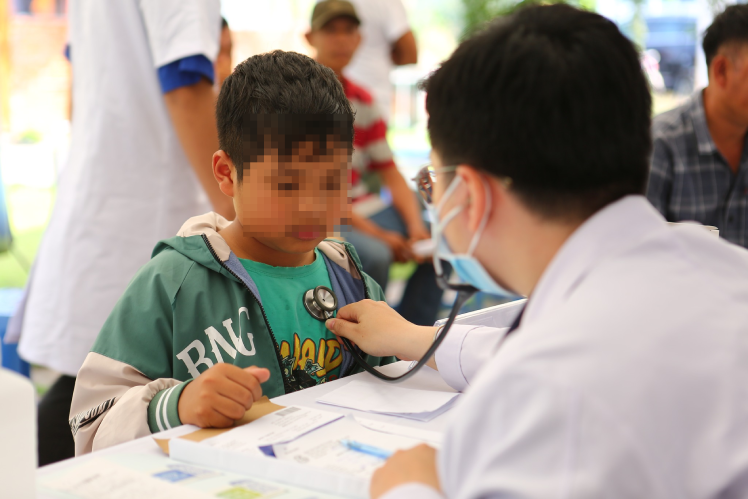
The HCM City Department of Health, in collaboration with the Health departments of Binh Duong and Ba Ria - Vung Tau recently held a workshop to assess the scale of healthcare service capability post-merger.
After the merger, HCM City’s area will expand from 2,095 km² to 6,772 km², and the population will increase from 9.9 million to over 13.7 million. Healthcare demand is projected to grow significantly, while medical resources may not be able to keep up initially.
The number of hospitals will increase from 134 to 164 (Binh Duong: 27, Ba Ria – Vung Tau: 13), and hospital beds from 41,525 to 49,147 (Binh Duong: 5,202, Ba Ria – Vung Tau: 2,420).
The bed-to-population ratio will drop from 41.7 to 31.3 beds per 10,000 people (target: 42), while the number of doctors will rise from 20,727 to 24,629, but the doctor-to-population ratio will fall from 20.8 to 13.08 per 10,000 people (target: 21).
The nurse-to-population ratio will also decrease from 37 to 29 per 10,000 people (target: 39). The total number of public healthcare service applications is expected to rise from over 20,000 to more than 30,000 per year.
National Assembly Deputies noted that while residents are enthusiastic about the merger, outpatient visits are projected to increase from 42 million to over 51 million annually, and inpatient treatments from 2.2 million to over 3.8 million per year.
HCM City’s healthcare system will handle over 30 percent of outpatient visits and 23 percent of inpatient treatments nationwide, raising concerns about overload at tertiary hospitals without timely solutions.
To address this, the health sector proposes building second and subsequent facilities for general and specialized hospitals in Binh Duong and Ba Ria – Vung Tau. Additionally, it is necessary to plan specialized medical clusters in these provinces and adjust bed, doctor, and nurse targets to suit the new context.
A major challenge is that Binh Duong and Ba Ria – Vung Tau lack out-of-hospital emergency services. HCM City’s 115 Emergency Center will survey and expand satellite emergency stations in these provinces. Meanwhile, a proposal to enhance the capacity of HCM City’s Center for Disease Control has been actively discussed, with commitments to expand disease prevention and community healthcare measures post-merger.
Public investment in HCM City’s health sector in 2021-2025 increased from VND48,549 billion to VND52,424 billion (HCM City: 115 projects, Binh Duong: 31, Ba Ria – Vung Tau: 8). For 2026-2030, the figure is projected to rise from VND58,638 billion to VND65,134 billion (HCM City: 82 projects, Binh Duong: 14, Ba Ria – Vung Tau: 2), plus six PPP (public-private partnership) projects worth over VND10,000 billion.
However, some projects face delays due to various reasons. National Assembly deputies suggested that HCM City leadership implement solutions to manage public investment projects post-merger.
Vo Thu